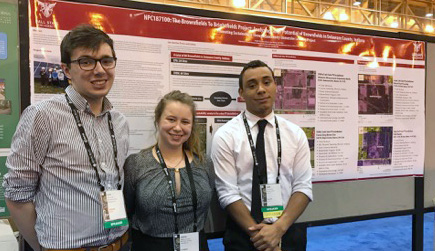Brownfields to Brightfields: Analysis of solar potentials of brownfields in Delaware County, Indiana
How to reuse land that may be contaminated with pollutants is a tricky question, but sophomores in urban planning grappled with it in 2017 as they analyzed the potential of such sites in Delaware County for solar energy production.
Assistant Professor Sanglim Yoo’s second-year Urban Planning studio class partnered with the Sierra Club’s Hoosier Chapter to complete the assessment.

“It inspired me to look at brownfields back in my hometown of East Moline,” said student Michael Terronez. “Maybe I can present them with some ideas.” Terronez, whose minor is sustainability, said the class project helped blend his interests in energy and planning and solidify his goals.
The immersive learning project, Brownfields to Brightfields: Analysis of solar potentials of brownfields in Delaware County, Indiana, was supported by funding from the provost’s office in both 2017 and 2018 to allow students to make site visits all over Delaware County and to travel to Marion to see Indiana Michigan Power’s Deer Creek Solar Farm.
The Environmental Protection Agency defines brownfields as properties for which expansion, redevelopment, or reuse may be complicated by the presence or potential presence of a hazardous substance, pollutant or contaminant. The term brightfields refers to solar arrays installed on brownfield sites. Estimates by the National Renewable Energy Laboratory show converting brownfields to brightfields could meet up to 80 percent of U.S. electricity needs by 2050.
Yoo praised the students’ effort in learning both basic planning skills such as land use analysis, mapping, and conducting site visits along with study of solar energy issues and potentials.
Yoo and students presented their findings at the Indiana Michigan Power stakeholder’s meeting in February, 2018. “We certainly hope this can bring positive changes to Delaware County,” Yoo said.
Students examined 19 sites in Delaware County, assessing each as a potential brightfield site. Those assessments include size, zoning, property ownership, solar radiation received, and estimated solar production. Distance to substations and transmission lines were other important considerations.
“I’m really impressed and grateful to Professor Yoo and the class,” said Jodi Perras of the Sierra Club, the community partner for the immersive learning class. “The transformation from coal to renewable energy is happening, so this is important practical information for Delaware County to have.”
Student Javan Johnson said he’d never heard of brownfields before beginning the project and wasn’t sure what to expect. He was surprised by how excited he felt as the team discovered a potential site was already partially owned by the utility company, making it a good candidate for conversion. Classmate Jack Treber had expected to find Indiana behind the curve on renewable energy and was happy to learn about initiatives in the Hoosier state.
Student Sarah Murray said she enjoyed using GIS mapping software to plot the sites. Like Johnson, she couldn’t define brownfield or brightfield before the class. “I definitely know now!” she said.